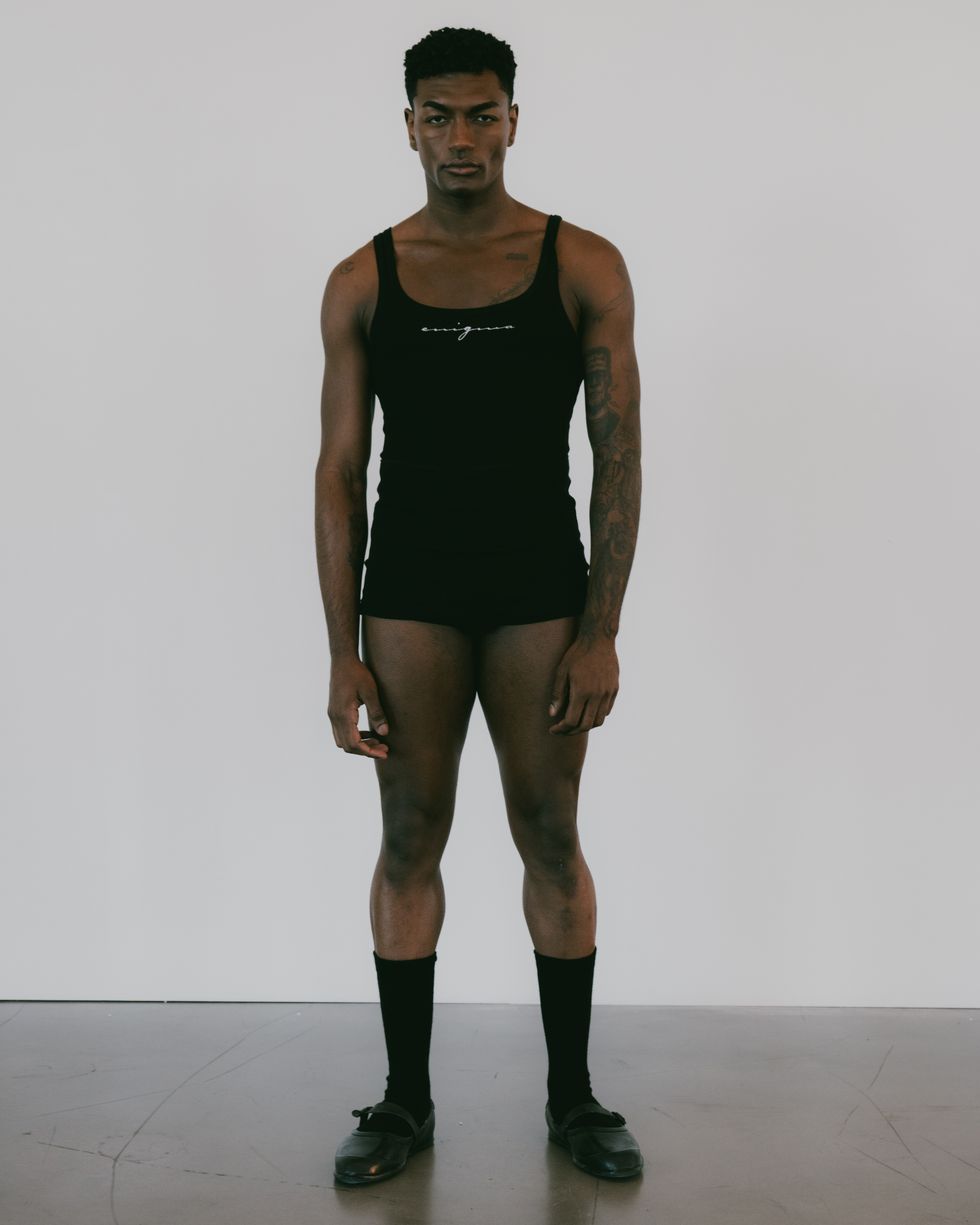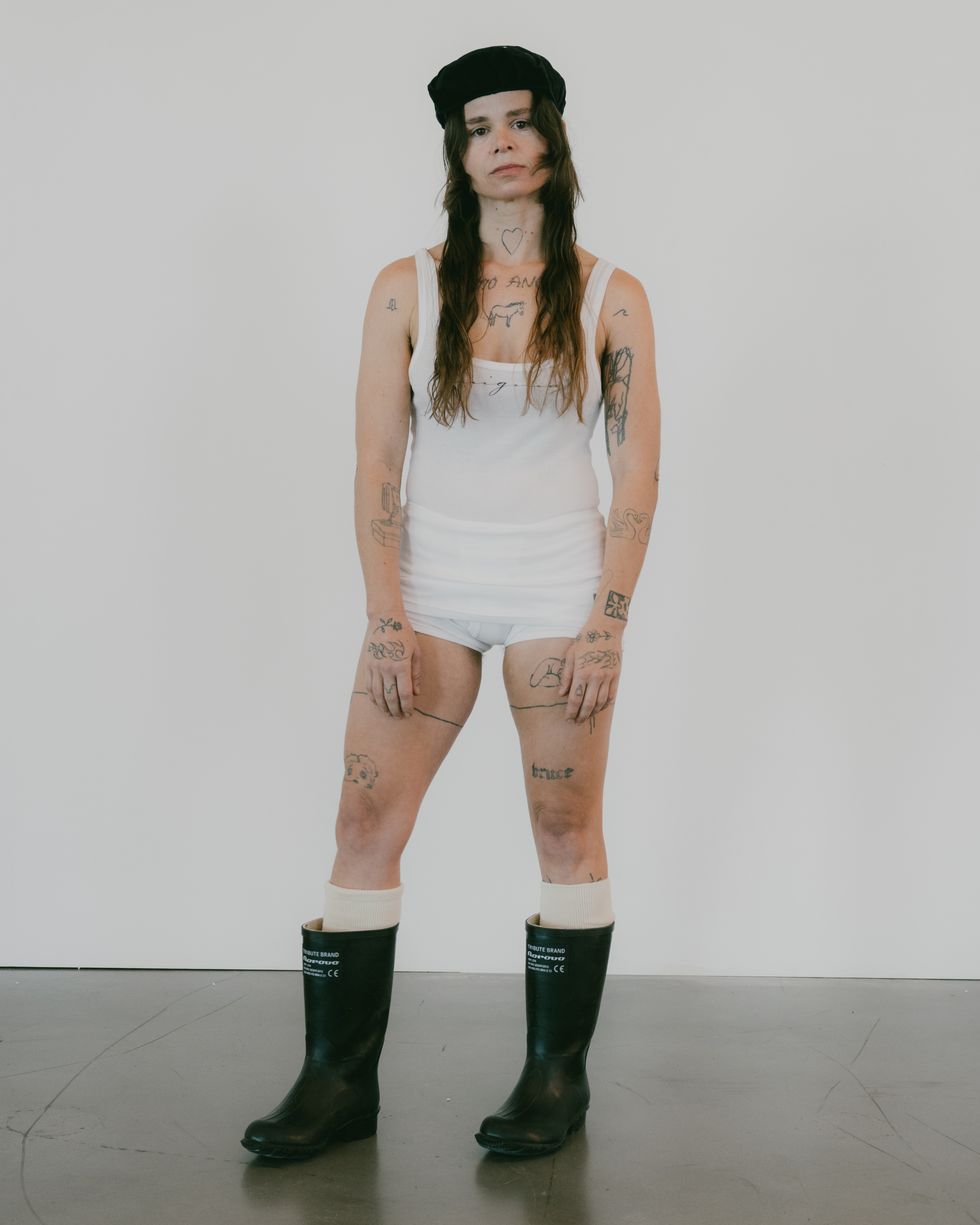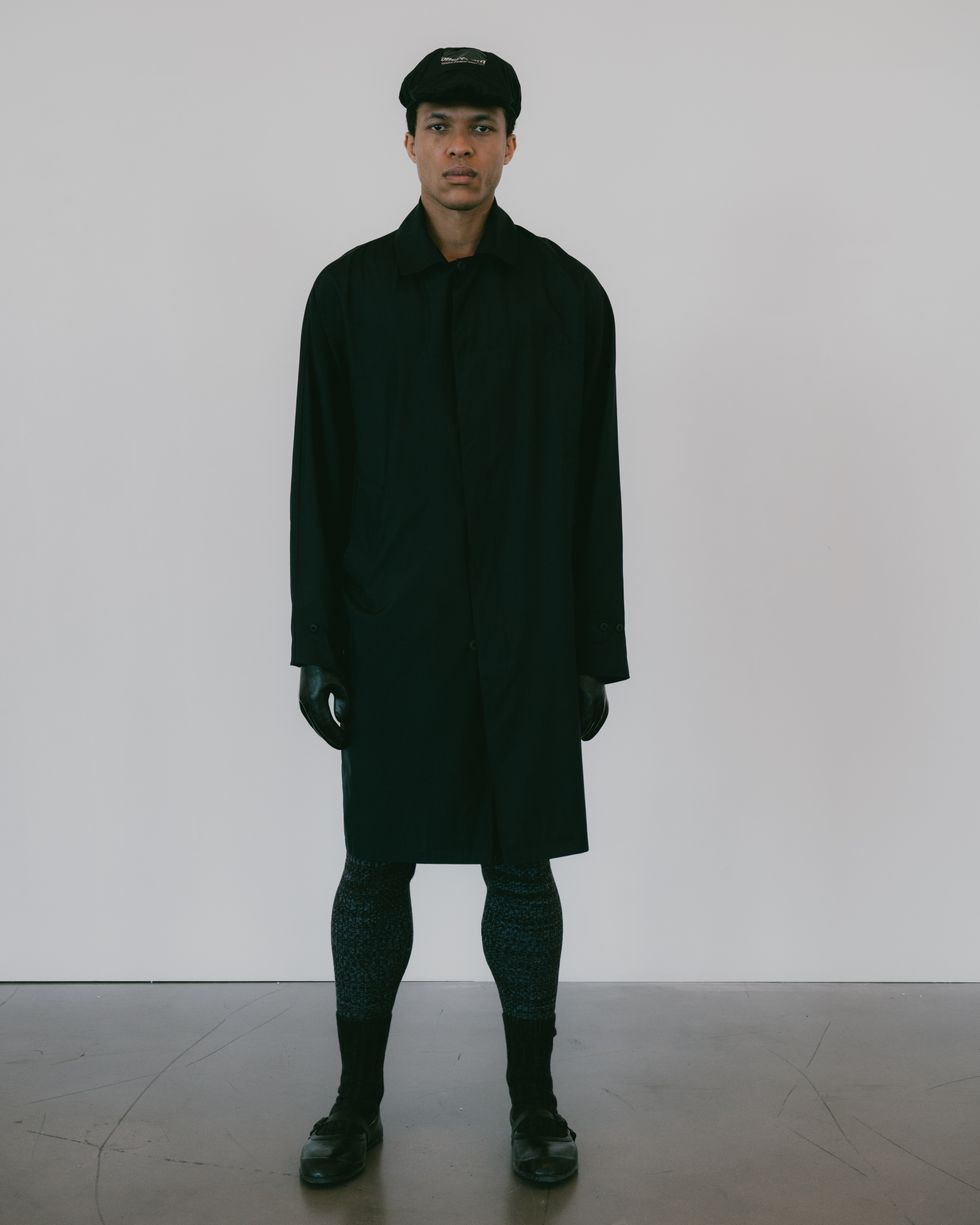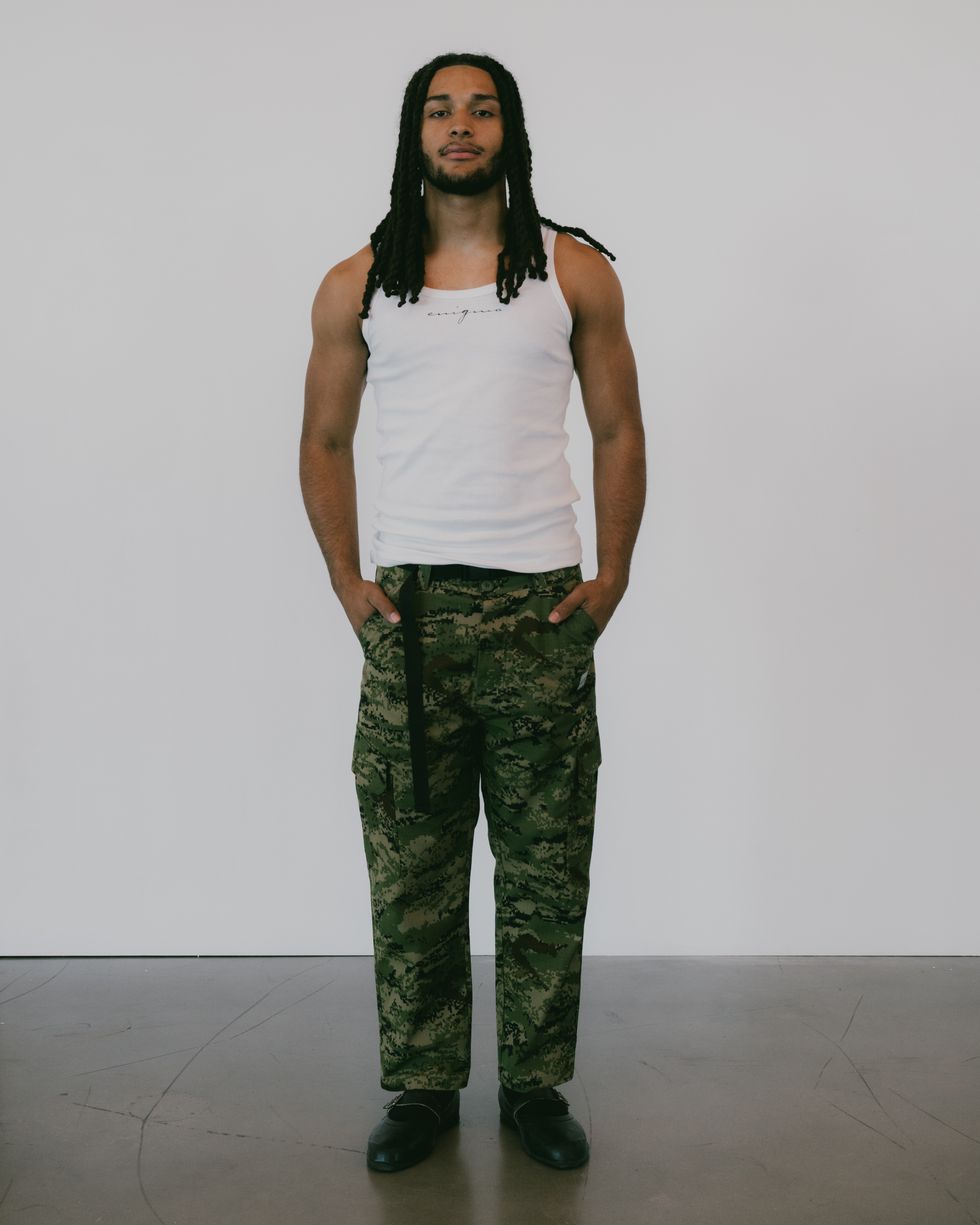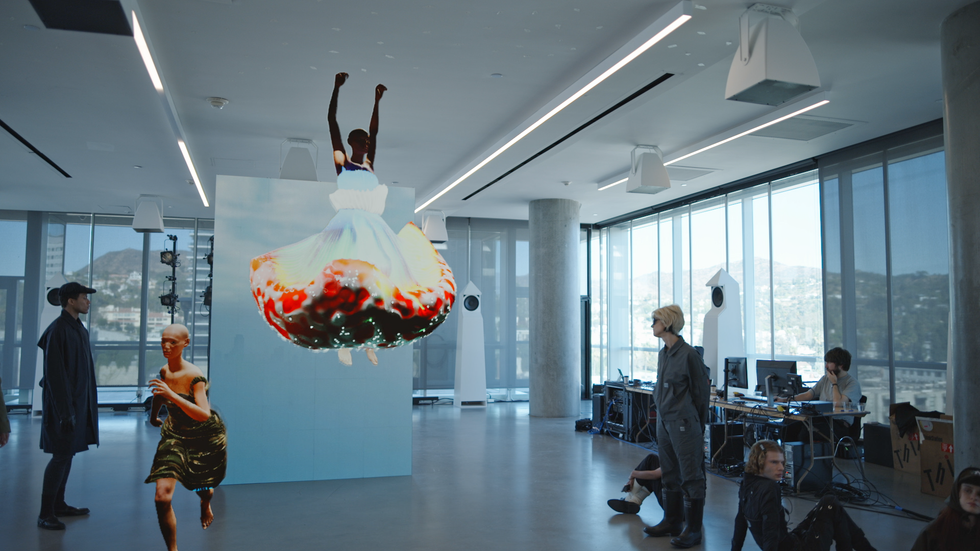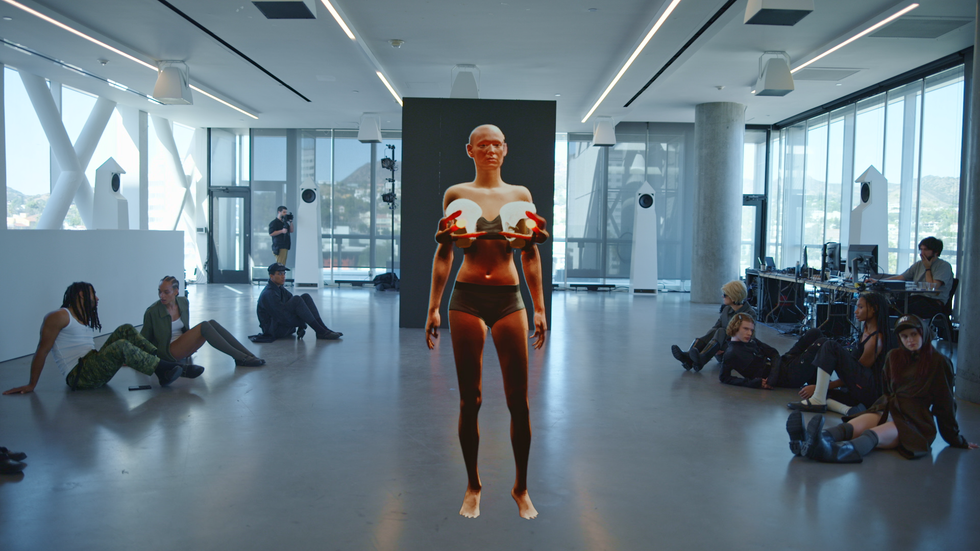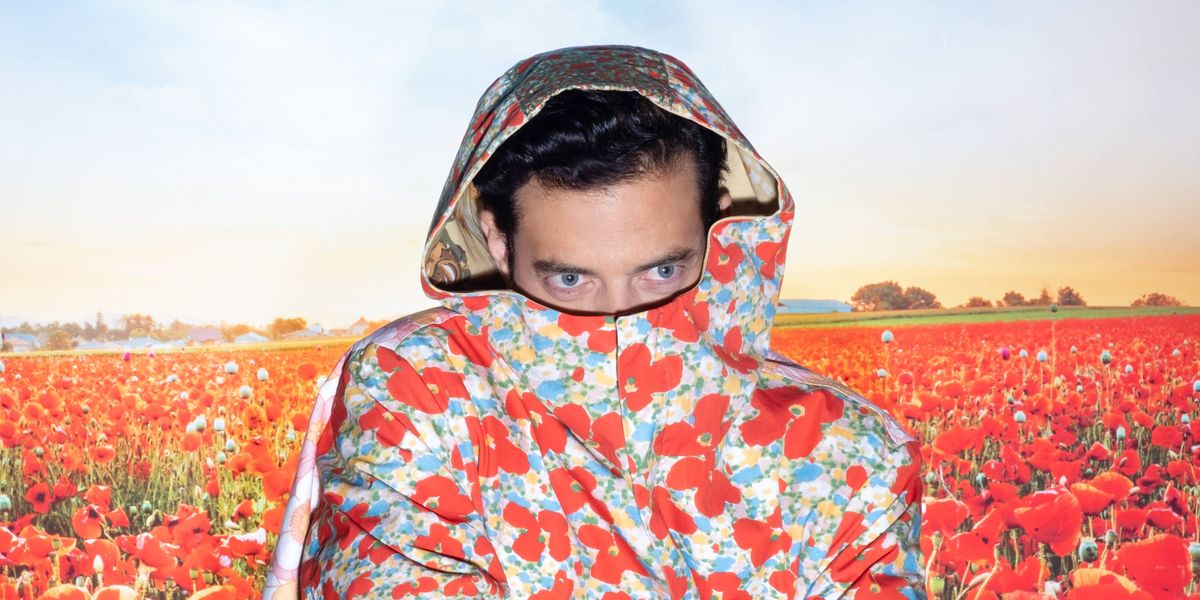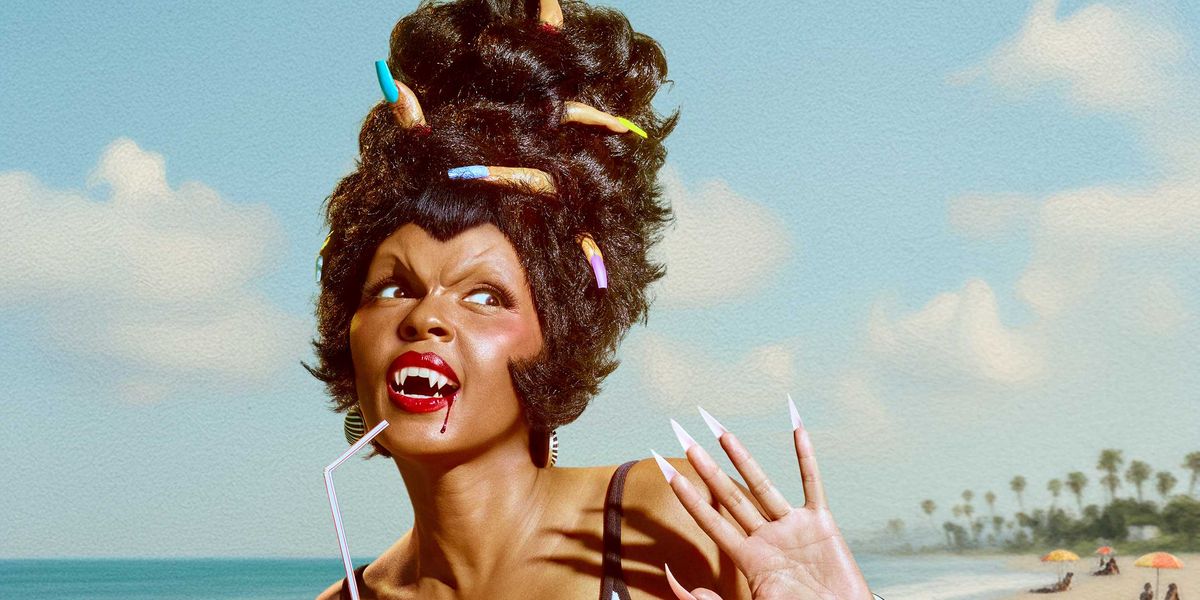
Tribute Brand Brings the Future of Fashion to LAFW
By Justin Moran
Nov 20, 2024Los Angeles Fashion Week saw a glimpse into the probable future through Tribute Brand’s collection, UNIFORMA, mixing 10 physical and 10 digital looks as a proposition for how the two realities can co-exist.
W Hollywood hosted the November presentation, which featured real-life models lounging around a runway show that came to life in augmented reality on screens placed around the rooftop space. Like a portal between two worlds, UNIFORMA became a mission statement for the way Tribute Brand approaches fashion: the physical should be “slow, functional and zero-waste,” while the digital should be “fast and fantastical.”
To create their real world clothes, Tribute Brand positioned themselves as both designers and archivists, sourcing materials and existing patterns from various Croatian factories. The products are decidedly utilitarian and sustainable, rejecting trendy silhouettes and opting instead for pieces that can be worn repeatedly. A layered bodysuit that reads “Enigma” is a UNIFORMA staple, featuring a slim fit tank top attached to briefs. There’s also monochromatic trench coats, sweater sets, zip-up jackets and rubber shoes, all of which can be styled interchangeably.
Tribute Brand’s digital offering at LAFW is where they unleashed full creativity without any limitations. Designs gave a subtle nod to LA culture, which in many ways mirrors American culture at large: a dramatic gown was made entirely of floating dollar bills, while another was modeled after a makeup blender in homage to the beauty boom. One model walked down the digital runway with a cigarette burn through its stomach, while a t-shirt without a body attached read “I <3 Gossip” in bright, bold letters. And, of course, camo print had a presence, as well.
Below, Tribute Brand’s Gala Marija Vrbanic and Tomislav Mostecak break down UNIFORMA in detail for PAPER.
You first launched Tribute Brand with exclusively digital designs. Why have you decided to introduce physical garments?
Gala Marija Vrbanic: We see fashion as a tool for self-expression and in 2024 self-expression spans both the digital and physical world. As a result of this, we’ve always seen Tribute Brand as a brand that’s not solely connected to one realm. So while we’re best known for our digital pieces, we’ve already done three other physical projects (DMAT 2021, PUNK 2022, ODDS 2023). What’s special about UNIFORMA is that it most clearly reflects the principles we believe should underlie physical fashion: that it should be slow, functional and zero-waste. In contrast, digital fashion must be fast and fantastical to allow you to have an unlimited amount of fun in virtual spaces.
What do you see as the relationship between the two, physical and digital?
Gala: As a brand we’ve always been hyper-aware that we self-express differently in different spaces. So the virtual clothes we create are never just digital twins of the physicals — in some cases they convey the same essence (PUNK) with a different form, and in others they’re intended to draw attention to our approach to creating physical and digital products (UNIFORMA). To expand on this, in the future I think the digital will be prevalent, but right now our physical and digital products coexist in the same space even when they’re not necessarily visually or conceptually connected. What we introduced at LAFW was actually two separate collections. One presented Tribute Brand’s view on physical clothing one presented Tribute Brand’s view on virtual clothing.
Tomislav Mostecak: Both serve as mediums for expressing and representing individual identity, albeit in different realities. We provide tools for self-expression in virtual environments, such as video games and social platforms, while also offering clothing for the physical world. Traditional fashion is deeply tied to the image. For our brand, the digital aspect serves not only as a platform for creative exploration but also as a strategic marketing tool.
How have you approached physical garments while keeping in mind the core belief that we don't really need new clothes released into the world?
Gala: In a world of exorbitant overproduction, we create clothes from existing fabrics, that don’t adhere to trends, and are highly functional. Our making process started with us approaching three Croatian factories that were big in the ’90s and specialize in utility clothing — one underwear, one shoes and one uniforms. Instead of re-creating their clothes, we asked to go through their archives and then made UNIFORMA using only their inventory — the deadstock fabric they had, their existing designs and colorways. So instead of creating new products, we positioned ourselves as editors of those pre-existing designs, reutilizing both concepts and materials instead of creating them anew.
Tom: We collaborated with factories that we have known and grown up with, working on products with which we are deeply familiar. The fact that my mother and I still have some of these items in our cupboards highlighted their enduring relevance and inspired us to revisit them. This familiarity allowed us to identify aspects that could be improved, particularly in terms of comfort. MTC, a Croatian brand specializing in jersey fabrics, was an ideal partner because we understood their capabilities and had a clear vision of which of their styles aligned best with our goals. Similarly, we collaborated with Borovo, a renowned Croatian shoe brand, leveraging their expertise to create products that reflect both heritage and modern refinement.
What has been the process for sourcing materials from Croatian companies with production and labor standards you approve of for the physical garments?
Tom: We aimed to utilize the existing patterns, machines and templates already available, integrating them into our design process. While there were significant limitations regarding what could be achieved, these constraints ultimately served as a source of creative direction, shaping and enhancing the final designs. Our approach was also guided by a conscious effort to avoid the appropriation of workwear garments, a practice often observed in the context of luxury fashion. Instead, we sought to maintain authenticity and ensure that the price point remained realistic, reflecting the true value of these items without unnecessary inflation
Aesthetically, how did you approve the designs of the garments themselves? How do they reflect the Tribute Brand's look and feel?
Tom: The design process was guided by the capabilities of the factories we collaborated with. The concept behind the UNIFORMA collection is to build a functional wardrobe, with items being made available periodically. It was crucial to ensure that the collection addressed all essential functions one might need in everyday wear. Aesthetically, the UNIFORMA collection is distinctly different from the digital collections for which Tribute is known. For us, the principles governing each medium are fundamentally different. In the digital realm, garments can be produced without physical constraints — for example, a digital dress can span 10 meters in length. Conversely, physical clothing must adhere to practical considerations, such as being compact enough to fit into a small bag. The design approach revolves around navigating the unique possibilities and limitations inherent to each medium.
Talk through the technology of the LAFW show itself. How did you visually want the physical and digital to interact in a real world presentation?
Gala: We wanted the presentation to show how the digital and physical can and will coexist together in the future. For this we partnered with STYPE, a company known for having the world’s best motion capture system. Their core business is providing big studios with equipment for news/sports and broadcasting when they bring interactive elements onto TV. So we took these elements and adapted them to be able to showcase our digital designs. In practice how this worked is by filming the show with two cameras, and then having this 14 foot LED wall, which we conceptualized as a portal between the physical and digital worlds. The presentation worked by having 10 models wearing our physical pieces, standing in front of the LED portal filmed by the cameras. The digital pieces were first seen on the LED portal, but then came to life in augmented reality on screens around the room. So when people first entered the room the only digital thing they could see was the LED portal and the high-tech setup (cameras, wires, screens), but then once they went and looked closely at the screens they could see the digital interactions where the avatars were stepping out of the LED portal, onto the catwalk, right in front of the physical models.
Were you inspired at all by LA culture? There are elements that felt very LA, like the cigarette hole through the model's body or the dress made entirely of cash.
Gala: We made the decision to show at LA Fashion Week firstly because we’re from Europe and we see it as the center of the broken fashion system we're striving to change. We also see LA as a place where people are very open to new ideas, sometimes to an almost a farcical extent. So the concept of the presentation was paying homage to the aspirational mindset that underlies Angeleno culture — where people are desperate to both buy and sell a dream — whilst also drawing attention to the ability to fulfill one's wildest fantasies fully in the digital.
Photos courtesy of Tribute Brand/LAFW
From Your Site Articles
- Tribute Brand Is Making 'Contactless' Clothes for the Cyber Age ›
- Ed Hardy and Theophilio Bring Style to Hollywood at LAFW - PAPER Magazine ›
Related Articles Around the Web
MORE ON PAPER
Entertainment
Rami Malek Is Certifiably Unserious
Story by Joan Summers / Photography by Adam Powell
Story by Joan Summers / Photography by Adam Powell
14 November
Music
Janelle Monáe, HalloQueen
Story by Ivan Guzman / Photography by Pol Kurucz/ Styling by Alexandra Mandelkorn/ Hair by Nikki Nelms/ Makeup by Sasha Glasser/ Nails by Juan Alvear/ Set design by Krystall Schott
Story by Ivan Guzman / Photography by Pol Kurucz/ Styling by Alexandra Mandelkorn/ Hair by Nikki Nelms/ Makeup by Sasha Glasser/ Nails by Juan Alvear/ Set design by Krystall Schott
27 October
Music
You Don’t Move Cardi B
Story by Erica Campbell / Photography by Jora Frantzis / Styling by Kollin Carter/ Hair by Tokyo Stylez/ Makeup by Erika LaPearl/ Nails by Coca Nguyen/ Set design by Allegra Peyton
Story by Erica Campbell / Photography by Jora Frantzis / Styling by Kollin Carter/ Hair by Tokyo Stylez/ Makeup by Erika LaPearl/ Nails by Coca Nguyen/ Set design by Allegra Peyton
14 October
Entertainment
Matthew McConaughey Found His Rhythm
Story by Joan Summers / Photography by Greg Swales / Styling by Angelina Cantu / Grooming by Kara Yoshimoto Bua
Story by Joan Summers / Photography by Greg Swales / Styling by Angelina Cantu / Grooming by Kara Yoshimoto Bua
30 September
Music
Demi Lovato Is No Joke
Story by Ivan Guzman / Photography by Jason Renaud / Styling by Chris Horan/ Makeup by Loftjet / Set design by Allegra Peyton
Story by Ivan Guzman / Photography by Jason Renaud / Styling by Chris Horan/ Makeup by Loftjet / Set design by Allegra Peyton
15 September


